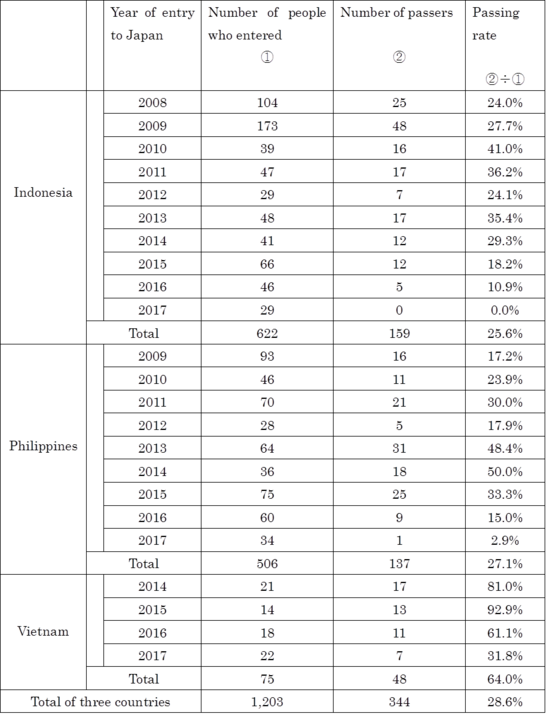Column Finance and the Social Security System 2019.05.31
【Aging, safety net and fiscal crisis in Japan】No.190: A key to raising the nurse exam passing rate in the Economic Partnership Agreement is to expand support for the Japanese language study of migrant workers before coming to Japan.
As mentioned in Column No. 40, the number of nurses required in 2025 is estimated to be about 2 million; as of 2015, the number of nurses is 1,634,119. In addition, the number of applicants is only 67,000 for the recruitment of 160,000 nurses. Therefore, the government has signed the Economic Partnership Agreement (EPA) with Indonesia, the Philippines, and Vietnam, and has launched a system for acquiring nurse human resources from overseas.
However, as shown in Table 1, the cumulative number of people who came to Japan from these three countries for the purpose of working as a nurse in Japan is 1,203. Of them, only 344 applicants passed the exam and are able to work as nurses.
They are talented people who have qualified as nurses in their own country. Looking at the passing rates by country, whereas Indonesia's is 25.6% and the Philippines's is 27.1%, Vietnam's is the highest at 64.0%. This trend is attributed to the fact that the period of Japanese language education that the examinees received before arrival is one year for Vietnam, whereas it is six months for Indonesia and Philippines. This suggests that improving Japanese language education before coming to Japan is effective for raising the passing rate.
Table 1: Number and passing rate of people who came to Japan for the purpose of working as a nurse based on the Economic Partnership Agreement

Source: Ministry of Health, Labour and Welfare
